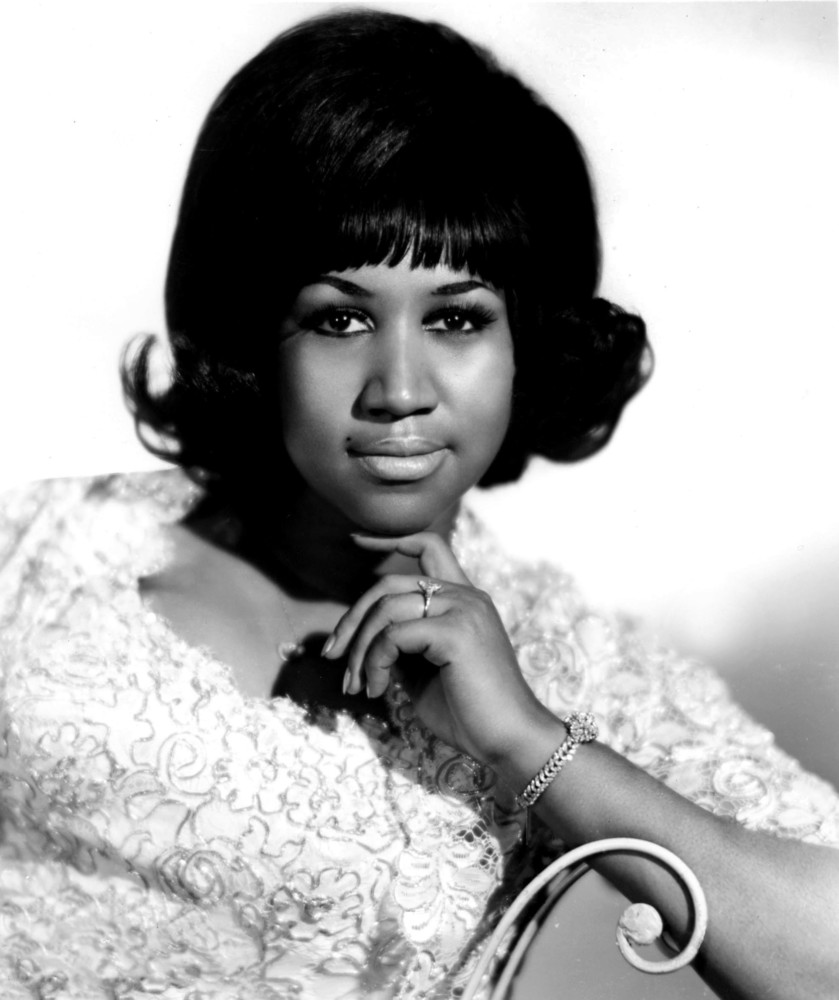By Greg Kot
Chicago Tribune
WWR Article Summary (tl;dr) Aretha Franklin, the “Queen of Soul” won 18 Grammy Awards and was the first female artist inducted into the Rock and Roll Hall of Fame, in 1987.
Chicago Tribune
Aretha Franklin, who died Thursday at 76, was a once-in-a-generation singer. She was the Queen of Soul, but she also ventured into, and mastered, virtually every style of music, from jazz and classical to rhythm and blues. She passed away at her home in Detroit, according to the late singer’s publicist.
The singer was in and out of ill health for years, and last summer in Detroit asked an audience to “keep me in your prayers.”
She had to take several breaks during the show and appeared frail. Earlier in the year she had announced that she would cut back her tour schedule. In 2010 she underwent surgery to remove a tumor and canceled six months of tour dates.
Yet last year before a performance at the Chicago Theatre she told the Tribune, “I’m not quitting,” and said she was working on new music with Stevie Wonder.
Though her musical contributions were diverse, ranging in tone from spiritual to gaudy, her inimitable singing style came from a single source. She practically grew up in church, and the emotional intensity and personal connection she nurtured there with the music never left her. It informed virtually every one of her 77 top-100 songs, including 21 No. 1 R&B hits.
“The thing many people don’t understand about this change in my career is that I never left the church,” Franklin once told author David Ritz about her transition to secular music in her late teens. “The church stays with me wherever I go and wherever I sing.”
Critic Anthony Heilbut, who has written extensively about Franklin’s life and career over the decades, has called the singer a pivotal figure in the way women and African-Americans were perceived in popular culture.
Franklin’s “role was such that a history of black America could well be divided into pre- and post-Aretha,” he once wrote.
She won 18 Grammy Awards and was the first female artist inducted into the Rock and Roll Hall of Fame, in 1987.
Not only was her multi-octave mezzo-soprano an instrument of stunning beauty, range and power, but her piano playing, often in counterpoint to her singing, was just as accomplished.
She influenced countless singers, Whitney Houston, Adele, Patti LaBelle, Natalie Cole, Chaka Khan, Mariah Carey, Luther Vandross, Jennifer Hudson, Fantasia. But her legend was forged not just on her ability to hit all the notes and embellish them with astonishing technical flourishes, but to convey emotional nuance and deep feeling.
Her fame seemed destined, as she grew up in the household of the famed preacher C.L. Franklin and was mentored by his friends, who included gospel greats Mahalia Jackson, Clara Ward and Albertina Walker.
As a girl, Franklin mesmerized congregations at her father’s house of worship in Detroit, New Bethel Baptist Church. But her career was not without hardship.
Aretha Louise Franklin was born March 25, 1942, in Memphis, Tenn., the second youngest of five children. Her family moved to Buffalo, N.Y., and then Detroit, where her parents divorced. Her mother died when she was 10, and because of her father’s travels, she was primarily reared by her grandmother.
As a teen, Franklin was a soloist in her father’s church and began recording gospel songs. She dropped out of high school and toured the gospel circuit, singing in churches around the country. It was a hard life during which she learned firsthand about racism while traveling the back roads of the South.
The young singer also learned how to interact with an audience. Even at 14, she was imbuing a towering gospel song such as “There’s a Fountain Filled with Blood” with drama and dread beyond her years. In her late teens she toured alongside the Staple Singers and Sammie Bryant and was second-billed to her father, the star preacher.
Then, much like gospel-circuit contemporaries such as Sam Cooke, David Ruffin and Dionne Warwick, Franklin shifted to popular music with her father’s blessing and moved to New York at age 18, leaving her two young children in the care of her grandmother in Detroit.
She was wooed by Motown, a small hometown label, but turned it down because it wasn’t properly established yet and instead signed with Columbia Records. There she was overseen by the legendary producer and talent scout John Hammond, a purist who saw her as an immense talent who shouldn’t be wasted on pop trifles.
Hammond made a number of fine recordings with Franklin that bridged the worlds of gospel and jazz, but Columbia grew impatient for hits, and the orchestral arrangements and choice of material didn’t always underline her strengths. Hammond acknowledged later that the label mishandled her talents with its straight-laced standards. Yet Franklin’s individuality still shined through. As Heilbut wrote, she “was the first gospel star to switch fields without switching styles.”
When her contract expired, she moved to Atlantic Records and came under the supervision of producer Jerry Wexler, who admired her gospel recordings and wanted to update their feel for the pop market.
Atlantic was an R&B juggernaut with a roster that included Wilson Pickett and Otis Redding (via the affiliated Memphis-based Stax label), and Wexler immediately paired Franklin with the Muscle Shoals rhythm section in Alabama.
A one-night recording session in January 1967 yielded a landmark song, “I Never Loved a Man (The Way I Love You),” a smoldering performance that seemed to address Franklin’s deteriorating relationship with her then-husband, Ted White.
Recording in the South during the height of the civil rights era proved overwhelming for Franklin, however, and she left the next day. Wexler, knocked out by the performance, came up with the solution: He would bring the Muscle Shoals rhythm section to New York, where his prized singer would be more comfortable.
Another classic soon followed, “Respect,” a cover of a Redding song that Franklin transformed in tandem with her sisters Carolyn and Erma. The siblings’ call-and-response chemistry dated to their days at New Bethel, and they brought a fresh, sassy, finger-wagging energy to Redding’s song that turned it into a ’60s protest anthem.
Wexler told Franklin biographer Mark Bego that it was “an intuitive feminist outcry, a sexual statement … a minority person making a statement of pride without sloganeering.”
Franklin’s landmark Atlantic albums and singles were essentially secular gospel recordings. The singer interacted with her piano and her backing singers, throwing lines and phrases back and forth in ecstatic conversations. But Franklin also brought nuance and subtlety to her vocals beyond most soul shouters, especially when singing ballads that sister Carolyn wrote for her, such as the exquisite “Ain’t No Way” and “Angel.”
Franklin herself was a formidable songwriter, composing classics such as “Think,” “Rock Steady” and “Spirit in the Dark.”
In 1968, at the funeral for family friend Martin Luther King Jr., Franklin sang a heartbreaking “Precious Lord.”
She was in many ways the perfect choice to sing that song at that moment. Her voice suggested the depth of a community’s despair.
“I call Aretha Our Lady of Mysterious Sorrows,” wrote Wexler in his 1993 memoir. “Her eyes were incredible, luminous eyes covering inexplicable pain.”
A few weeks after the King funeral, Franklin became only the second African-American woman to appear on the cover of Time magazine.
She collaborated with Ray Charles, covered Simon & Garfunkel and the Beatles definitively, and revisited jazz on “Soul ’69.” She also recorded a magnificent gospel album in 1972, “Amazing Grace.”
During this period she would frequently appear in African garb, a woman consciously representing her community, gender and beliefs with empowering self-confidence that resonated with generations of oppressed minorities.
Her career was derailed by the onset of the disco era in the ’70s and then by the shooting of her father in an attempted robbery in 1979. He spent five years in a coma before dying.
A cameo in “The Blues Brothers” movie in 1980 got her back on track, and the ’80s were dotted with feisty, if relatively insubstantial, hits such as “Freeway of Love” and “Who’s Zoomin’ Who” and a typically commanding return to the gospel arena, the 1987 album “One Lord, One Faith, One Baptism.”
Back in the spotlight, she took her “Queen of Soul” brand to bombastic extremes, the diva years were in full bloom.
She appeared onstage in outrageous feathered outfits and tutus, practicing her ballet moves with a knowing grin.
But she remained capable of summoning greatness. In 1998 she released one of her best latter-day albums, “A Rose Is Still a Rose,” and appeared on the nationally televised Grammy Awards as a last-minute replacement for an ailing Luciano Pavarotti. She sang “Nessun Dorma,” an aria from Puccini’s “Turandot,” and won over a new audience stunned by her operatic derring-do.
Later that year, she smoked a handful of would-be successors (including Mariah Carey, Celine Dion, Shania Twain and Gloria Estefan) in the “VH1 Divas Live” TV special. The New York Times raved that she was in a class by herself: “Aretha Franklin has created what can only be called gospel bel canto.”
She knew how to make a statement, and not just with her voice. She made waves with the bow hat she wore to Barack Obama’s inauguration ceremony in January 2009.
The hat is now in the Smithsonian Institution. But even more stunning was her performance of “America (My Country, ‘Tis of Thee),” with Franklin giving herself over to the moment, bearing witness to the arrival of the first African-American president in her country’s history.
“Let it ring, let it ring, let it ring,” she urged, testifying to her community and her country as if she were still singing hosannas at her father’s church.

















































































































































































































































































































































































